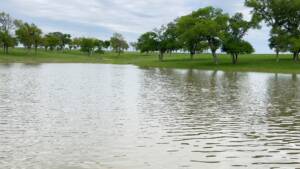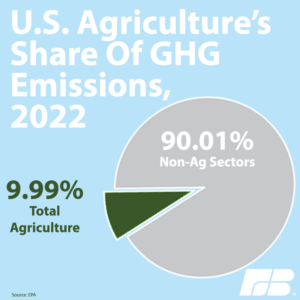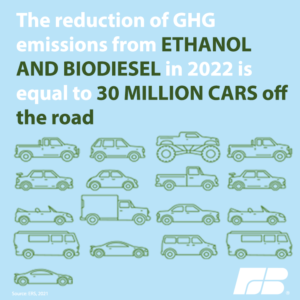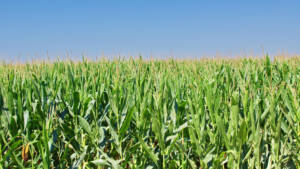Sustainability
U.S. agriculture contributes just 10% to overall GHG emissions, far less than other major industries, and plays an active role in enhancing wildlife and absorbing carbon.
At Farm Bureau, we are proud of agriculture’s sustainability story, and we believe the future of agriculture is bright as we work together to further climate-smart solutions that protect our resources, farms and communities.
Use this interactive map to see how farm and ranch families across the country are working to build a sustainable future of safe and abundant food, fiber and renewable fuel for our nation and the world.
Climate-Smart Farming
Sustainability and efficiency on the farm go hand-in-hand. Farmers today are doing more with less thanks to innovation and technology. In fact, U.S. agriculture would have needed nearly 100 million more acres 30 years ago to match today’s production levels. Smarter farm equipment, precision ag tools and biotechnology are helping farmers care for their crops, while using less water, fertilizer and pesticides.
As farm efficiency goes up, emissions are going down in the livestock sector. Although livestock emissions get a lot of attention in discussions around sustainability, they make up 4.3% of overall emissions in the U.S., and those numbers are declining thanks to improvements in feed and production.
U.S. agriculture would have needed nearly 100 million more acres 30 years ago to match today’s production levels
Carbon Markets
Agriculture can also play a role in offsetting emissions beyond the farm gate. From climate-smart farming practices to voluntary management of forests, grasslands, wetlands and croplands, farmers are not only reducing their footprint, but also are actively absorbing carbon from the atmosphere. The demand for carbon offsets from agriculture has grown significantly in recent years, but the process is still confusing and cumbersome, which then limits farmers’, ranchers’ and foresters’ participation. Often, farmers who want to participate have to hire private parties to help them adopt the right conservation practices and verify that certain processes and protocols were followed in implementing those practices. As these markets are being developed, Farm Bureau is working closely with industry partners and lawmakers to identify solutions to ensure these markets are voluntary and economically viable for farmers and ranchers and that they go hand-in-hand with climate-smart practices in place on the farm.
To learn more about carbon credits and other ecosystem services markets, click here.
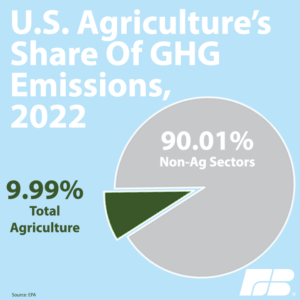
Renewable Energy
Farmers are embracing and growing renewable energy. Biofuels are an American-grown energy success story, reducing our country’s emissions and increasing our energy independence. Over the last decade, nearly 3 trillion pounds of corn have been used to produce clean, renewable ethanol for blending into motor fuels. In 2022 alone, the reduction in GHGs from the use of renewable fuels in place of gasoline was equal to taking 30 million cars off the road.
Beyond biofuels, farms and ranches are embracing a variety of clean energy sources, harnessing natural resources and turning farm waste into fuel. Over the last decade, we have seen a 167% increase in farms and ranches using renewable energy-producing systems, which includes geothermal, solar panels, windmills, hydro systems and methane digesters— that’s nearly 100,000 additional farms.
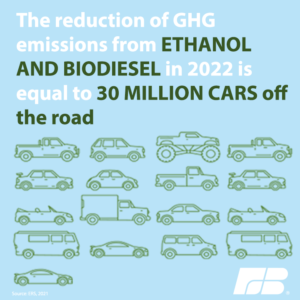
Ag Research and Innovation
The only way agriculture will be able to achieve the dramatic goals being discussed today is through investments in research to develop the next generation of technology and practices to help us take our efforts to the next level. We need researchers and innovators working on tomorrow’s tools today if we are going to continue to reduce net emissions across the food chain. Many of the innovations that have helped farmers and ranchers significantly reduce their environmental footprint in the last several decades began in agricultural research labs at America’s land-grant universities, but funding for these programs has declined in recent years. The U.S. has dropped from being the global leader in funding research and development in the last decade, and it’s time to bridge that gap before we also lose our place as the leading producer of sustainable food, fiber and renewable energy.
The latest innovation and advances in technology can’t translate to making a difference on the ground, however, without reliable broadband. If America’s farms and rural communities are going to continue to be sustainable both economically and environmentally, we must ensure that all Americans have access to the internet speeds essential to survive and thrive today.
What We're Saying
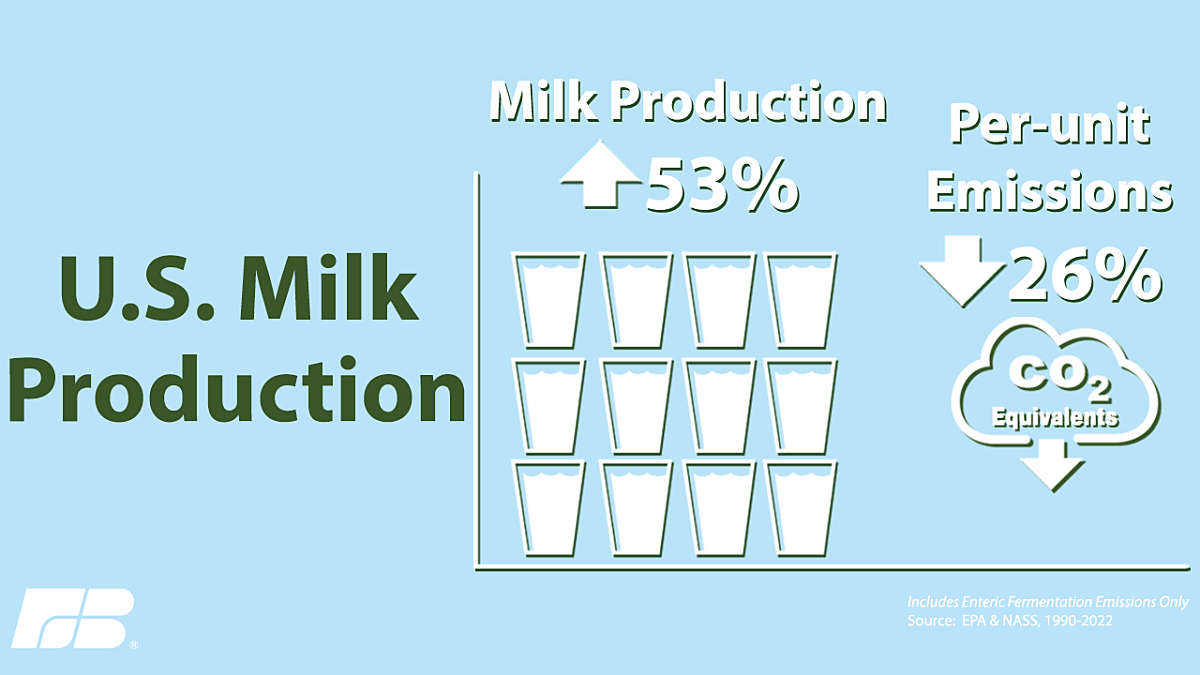
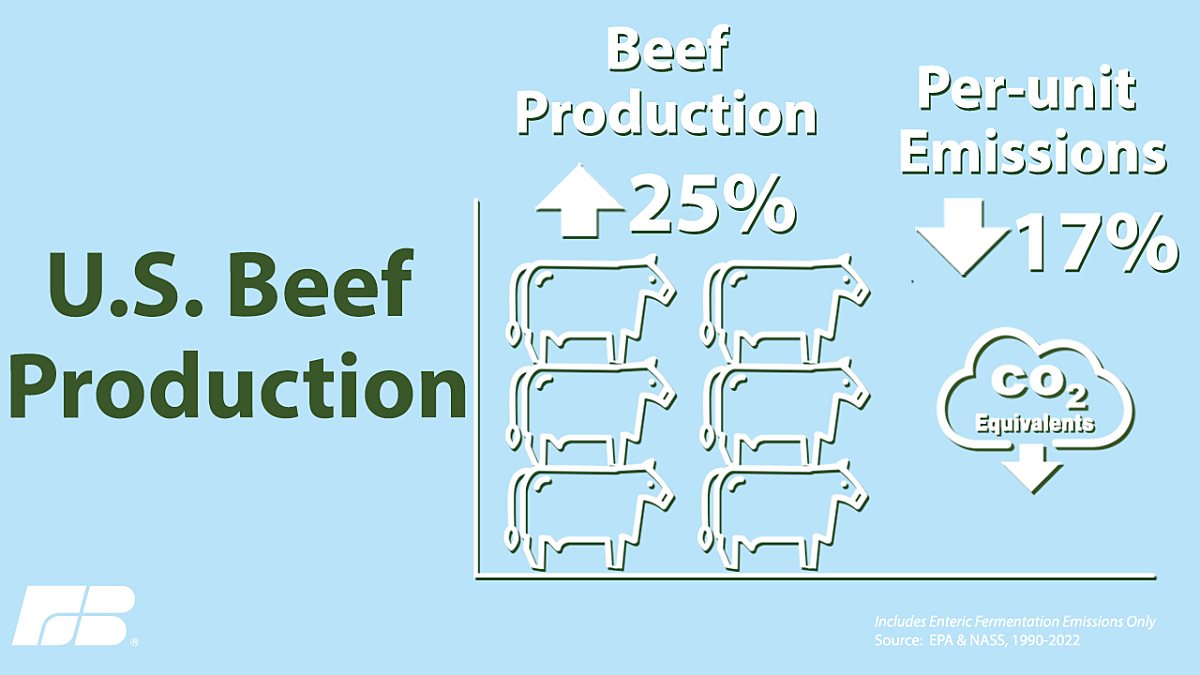
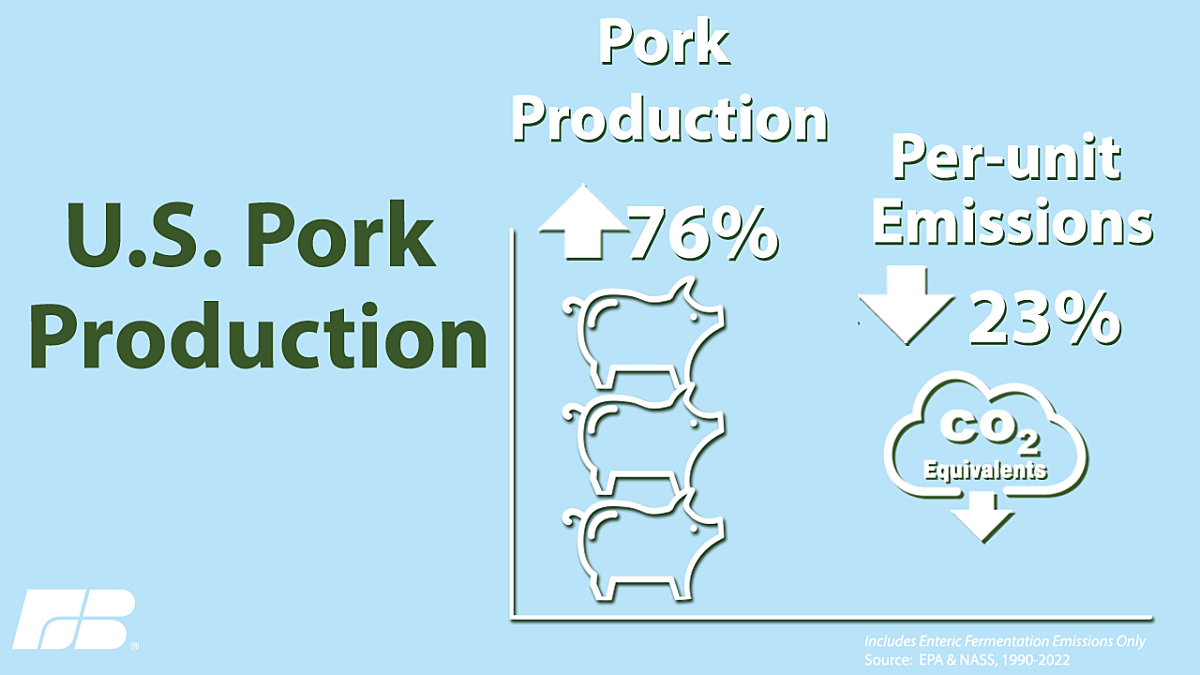
On The Ground
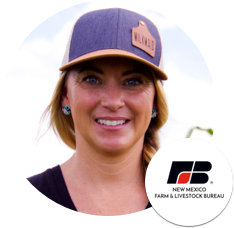
I think sustainability to farmers just comes second nature. If you asked a farmer, ‘are you sustainable’ they’d probably look at you a little funny and say ‘I don’t think I’m doing anything that special.’ But it really is just what they do.
— Tara Vander Dussen, New Mexico Farm Bureau
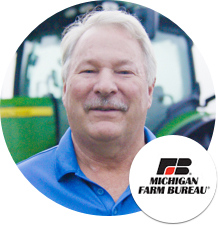
We’ve had multiple decades of trying to do things that are good for the environment, good for the soil and good for water.
— Doug Darling, Michigan Farm Bureau

Sustainability to me, means longevity... That’s why the youth are so important because without them being involved and them learning and being exposed to these ideas now, we can’t ensure that farming is going to look the way we want it to look if we don’t incorporate the youth.
— Kamal Bell, North Carolina Farm Bureau
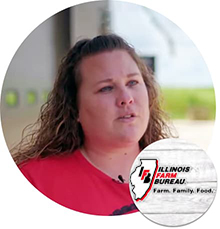
We’re thinking about soil health and how we can generate more income too.
— Ellen Rahn, Conservation Through Nitrogen Management
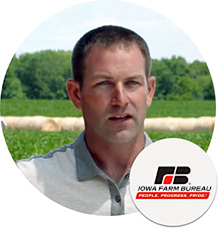
You keep that dirt where it’s supposed to be, then you got better farming.
— Jarred Webber, Innovation Helps Farmers Build on Conservation Success
Partners in Sustainability

To chart the course ahead with recommendations to achieve climate goals through voluntary, market-driven programs, AFBF co-founded the Food and Agriculture Climate Alliance.
Trending Topics
VIEW ALL